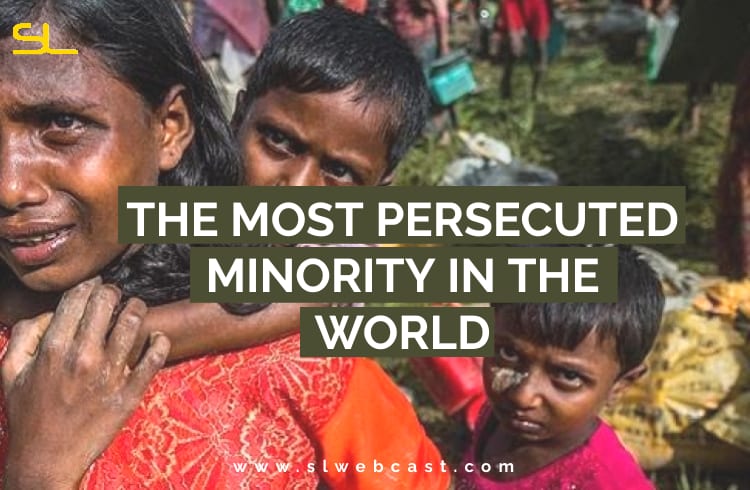Who are the people of Rohingya?
Called the most persecuted minority in the world, Rohingya has a millennial-long history in Myanmar, the country that’s excluding them. – National Geographic
The more than one million Rohingya Muslims are described as the world’s most persecuted minority. – Al Jazeera
Turning the pages in the newspaper, scrolling the posts on Instagram and Facebook, and watching the videos on YouTube is how an ordinary routine goes. Have you ever seen on the news or posts on your feed incidents about Rohingya? Life is led by injustice in Rohingya. This is really a controversial topic across the globe. Justice is not sought at all and injustice blooms everywhere in the lives of innocent people.
Nearly all the citizens of the Rohingya in Myanmar living in the western coastal state of Rakhine are not allowed to leave without government permission. It is one of the poorest states in the country, with ghetto-like camps and a lack of basic services and opportunities. Due to ongoing violence and persecution, hundreds and thousands of the people of Rohingya have fled to neighbouring countries either by land or by boat over the course of many decades.
- These issues only pop up socially when they worsen but they must be addressed and engaged in solutions to prioritize and give rights and freedom to the people. Lack of development and poor resources is very evident, but no organization steps in to take action.
- The people aren’t considered or treated as human beings, the influential people assume they are just servants where they can pay less and get more work done. This portrays how unfair and injustice the influential people have been treating the residents of Rohingya.

Where are the Rohingya from?
Muslims have lived in the area now known as Myanmar since as early as the 12th century, according to many historians and Rohingya groups. The Arakan Rohingya National Organisation said: “Rohingyas have been living in Arakan from time immemorial,” referring to the area now known as Rakhine.
No priority and no justice are laid down. They think of the people here as a cheaper aspect and make them suffer. They aren’t even provided with good shelter or proper state! – Al Jazeera
Why aren’t they recognised?
Shortly after Myanmar’s independence from the British in 1948, the Union Citizenship Act was passed defining which ethnicities could gain citizenship. According to a 2015 report by the International Human Rights Clinic at Yale Law School, the Rohingya were not included. The act, however, did allow those whose families had lived in Myanmar for at least two generations to apply for identity cards.
Rohingya were initially given such identification or even citizenship under the generational provision. During this time, several Rohingya also served in parliament.- Al Jazeera

How did the Rohingya refugee crisis begin?
The citizens of Rohingya have suffered decades of violence, discrimination and persecution in Myanmar. Their largest exodus began in August 2017 after a massive wave of violence broke out in Myanmar’s Rakhine State, forcing more than 700,000 people – half of them children – to seek refuge in Bangladesh. Entire villages were burned to the ground, thousands of families were killed or separated and massive human rights violations were reported.
People got chained and were dead suffering. Racism and biased policies made people lonely forever without their own families. Life there is being decided by the influential people, developing more injustice to take advantage of the ordinary people. All they do is discriminate and dominate the innocent.

Rohingya Refugee Crisis Explained
In August 2017, armed attacks, massive scale violence, and serious human rights violations forced thousands of Rohingya to flee their homes in Myanmar’s Rakhine State. Many walked for days through jungles and undertook dangerous sea journeys across the Bay of Bengal to reach safely in Bangladesh. Nearly 890,000 reached the Cox Bazar region of Bangladesh which is now home to the world’s largest refugee camp. The United Nations has described the Rohingya as “the most persecuted minority in the world.”
It’s heartbreaking to evidence the people of Rohingya being chased out of liberty, chased out from their own shelter with no food or basic needs. Surviving is complicated and the doors are closed for them.
Is There Any Solution to Myanmar’s Rohingya Crisis?
In February, the coup further complicated the potential return of more than 1 million Rohingya refugees to Myanmar. The trouble is that a resolution to the Rohingya crisis was complex even prior to the coup. At that time, a solution to the refugee crisis hinged on paving the way toward voluntary repatriation of Rohingya refugees to the villages that they fled at the point of a bayonet in 2016 and 2017. The problem was that the conditions within the Rakhine State were mostly inhospitable for the return of those who fled.
With little hope of voluntary returns, the Bangladeshi government has advanced its own partial solutions. One of these has been the relocation of Rohingya to Bhasan Char, a wind-swept island in the Bay of Bengal. More than 19,000 people have been relocated to the island, with Dhaka targeting as many as 100,000. But human rights advocates claim the island is inhospitable and have documented many instances in which civilians were coerced into moving to the island. Writing in The Diplomat, Zaw Win of the advocacy group Fortify Rights argued that the facilities on Bhasan Char were “closer to an island prison than an appropriate location for refugees.”
According to Andrews, the path to a solution lies through pressing the Myanmar military junta with punishing economic embargoes and sanctions, designed to strangle its manifold revenue sources. “It’s a large military and it’s very formidable,” he said of the Myanmar military, “but large militaries take significant resources to supply and sustain. I think that the international community can do a much better job of identifying sources of revenue that are flowing into the coffers of this military junta and perpetuating these atrocities.”
Of course, his use of the phrase “international community” suggests a stronger degree of unity than what exists in practice and elides the fact that the major powers and regrettably divided in their approach to the situation. In particular, Russia has seen the coup as an opportunity to boost its arms sales to Myanmar and undermine the moral authority of the West, while neighbouring China, perhaps convinced the military will ultimately succeed in consolidating its coup, has prioritized the preservation of its strategic and economic stakes over-exercising its leverage over the junta. (Beijing is also an important source of arms for the Tatmadaw.)
The solution laid out by Andrews is not only the best solution to the crisis in Myanmar; it is likely the only one. But any attempt to starve the Myanmar military into submission is likely to take some time. Like many of Myanmar’s challenges, any resolution to the Rohingya crisis will rely heavily on a resolution to the country’s wider political impasse.
Some of the solutions that can support to this overcome this refugee crisis are,
- developing the food stability which is agriculture and providing them food,
- developing infrastructure which is really required at the moment like hospitals, education centres and sanitary facilities,
- developing the technology at the basic level to give a good growth system to the people
- giving them guidance on how to overcome these crises without any obstruction and to implant solutions.


